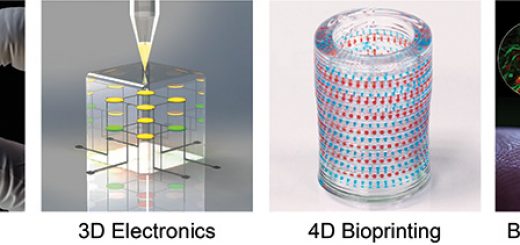German Armed Forces Use 3D Printing To Redesign An Obsolete Part
The German Armed Forces are working on using 3D printing directly in the field, as described in a study entitled “Characteristics of a metal additive manufacturing process for the production of spare parts.” The plan is to re-engineer machine parts that get worn out during deployment, create a printable file, and send it back to the area of operation, where the troops will then 3D print the part. This sounds simple, and the armed forces in other countries are working on 3D printing in the field as well. But as the authors of the paper point out, there are many uncertainties in the process.

“Usually, the development team does not exactly know the exact dimensions nor functional boundary conditions of the part in question,” they state. “It is incumbent upon the team to collect lacking information to a sufficient level of confidence.”
The authors discuss an agile development approach. Agility, as defined by the paper, is “the ability to quickly and cooperatively react to changes in unpredictable environments in order to meet demands efficiently and effectively.” The paper takes a look at a specific case study carried out by the German Armed Forces. When the military needs a spare part 3D printed, the work is carried out by WiWeB, the federal research institution Bundeswehr Research Institute for Materials, Fuels and Lubricants.
When a request comes in for a 3D printed component, the work is carried out by two teams. The design team is responsible for generating a 3D printable file, and the manufacturing team is responsible for the actual 3D printing and post-processing. After the part is completed, the proofing department is responsible for ensuring quality control and certifications in some cases.

In the case study, a worn-out valve cover for a diesel generator was sent to the design team for redesigning, but no documentation regarding the original dimensions, material or other specifications was available. The team was able to deduce from its complexity and geometry that the part had originally been cast, and material analysis showed that it was made from a special aluminum alloy, AlSi10.
“In practice, such parts are commonly not considered to tend to wear, so they are not available in warehouse,” the authors state. “Since the machinery using this component date from several decades ago the acquisition of such a spare part, especially after a long period of time after its production, is practically impossible. Given the complex shape as well as the non-availability of the spare part, this valve cover was predestined to be remanufactured using AM.”
The first step was to scan the part using a 3D scanner. The data acquisition was conducted using Polyworks Inspector, with multiple scans being merged into a single file.
“Nevertheless, manual post-processing was necessary to adjust the homogenous structures of the part due to the occurrence of holes,” the authors continue. “Challenges throughout the scanning process such as unwanted noise led to imprecise measurements, resulting in false point assignments. Such effects make it necessary to apply software-based corrections in order to homogenize the surface structure of the part. Coupled with signs of wear, the results of the scanning were not sufficient, and the part had to be redesigned manually in the reverse engineering process.”
Thanks to the expertise of the design team, it was possible to delete and/or modify features that were not critical to the part’s function and were inherent to the original manufacturing process. In this example, the draft angles on the side faces and the extraction supports for the casting mold were obvious features of subtractive manufacturing, and could be removed for additive. This phase is called Design for Additive Manufacturing (DfAM) and takes advantage of 3D printing’s ability to more efficiently produce the component.

Support structures were then generated, and the part was manufactured using SLM. The print took 37 hours with an additional two hours of heat treatment to reduce residual stresses, and another hour to grind off the support structures.
“It is important to emphasize that these processes for spare parts production, although driven by military scientific research, have applications in many other different industries, and their participation will be more important in the coming years with the massification of AM and the arrival of Industry 4.0,” the authors conclude. “Also, metal AM is successively gaining importance due to the flexibility of the process itself and its potential applications, however guidelines for designing are necessary. Since having to deal with several uncertainties throughout different stages of the process, the adaption of certain principles of agile hardware development appears to be reasonable.”
Authors of the paper include Alexander Atzberger, Joaquin Montero, Tobias Sebastian Schmidt, Kristin Paetzold and M. Bleckmann.
Source: morgen




Recent Comments